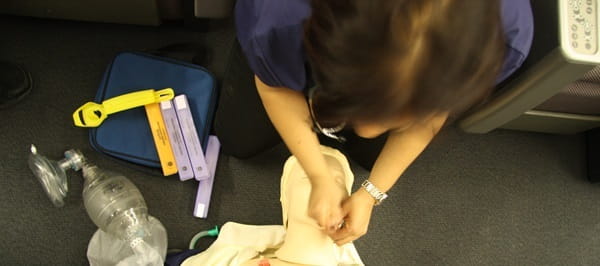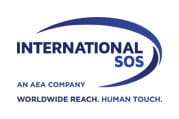Is there a Doctor on Board?
Published: 17 August 2015
HAVE YOU EVER WONDERED WHAT HAPPENS IF SOMEONE IS TAKEN ILL ON A FLIGHT?
This thought has probably crossed all our minds at some point whilst flying. It is an understandable concern. Each year many thousands of people need medical assistance during a flight.
The days of asking ‘Is there a doctor on board?’ are diminishing. Rather than leaving things to chance, airlines prefer to be fully prepared. It is a combination of crew being trained to effectively respond on-board and having ready access to qualified medical experts like the doctors that support MedAire’s MedLink service.
Avoiding medical events in the first place is always our starting point. Most airlines train their ground staff and cabin crew to be observant during boarding. They aim to identify anyone who might be medically unfit to travel.
IN-FLIGHT ADVISORY EXPERTISE AND TELEHEALTH
All in-flight calls from our client airlines are handled by the MedAire team. Dr Paulo Alves, Global Medical Director, Aviation Health, MedAire, explains: “There are two critical elements to call handling: The Communication Specialist and the doctor. They are both highly experienced professionals who work closely together.”
The Communication Specialist handles the call initially. In the past, simply receiving a call could be difficult. Messages had to be patched through radio companies from the aircraft radio. High Frequency radio tended to have a lot of static, making calls difficult to hear. That is much better now, but handling calls still requires skill. The phonetic alphabet (Alpha, Bravo, Charlie) is used to spell the often complex names of medications. There is also a lot of aviation terminology to grasp. MedAire Communication Specialists often come from an aviation background. As Dr Alves says, “They need to be able to understand the environment. They need to have well trained ears.”
All MedLink doctors are part of a hospital emergency team. This is no coincidence, as Dr Alves explains. “Emergency doctors are ideally suited to the response centre task. They are used to dealing with total strangers. They have to make decisions with limited information, without the luxury of lots of tests. That is precisely what we do when dealing with in-flight situations.”

When the initial information is passed on to the doctor from the Communication Specialist, the doctor then spends time talking to the crew about the passenger’s condition and making recommendations for medical support. Whether or not to recommend a diversion is also considered. Depending on the communication system, the doctor speaks directly to the cabin crew or relays information via the pilot. The doctor then recommends a plan of care and if needed, also advises the crew on using the on-board medical kit.
Some airlines also rely on TeleHealth support, using devices such as the Tempus IC. It uses satellite technology to transmit video images and medical information to doctors on the ground. This includes ECGs, blood sugar levels, blood oxygen levels, pulse rate, blood pressure and temperature. The Tempus IC device is specially designed for use by lay persons such as cabin crew.
MedAire recently assisted a passenger who had a heart attack in flight. The aircraft was equipped with a Tempus IC. The crew was able to transmit an ECG that helped the doctor make a precise recommendation which included diversion. The team then transmitted the ECG to the receiving hospital. This fast action ensured that the passenger received optimum care.
Several airlines are using the Tempus IC. As Dr Alves says, “They are the pioneers. In-flight TeleHealth is still relatively primitive in some ways, but they are getting there.”
SHARING OUR EXPERIENCE
Over the last 30 years we have built up a huge body of knowledge and experience. We handled more than 36,000 in-flight cases in 2014 alone. That’s around 100 in-flight calls a day.
We want to share this experience with the wider airline community. Dr Alves and his MedAire colleagues frequently speak at airline industry conferences. As he says: “There is no textbook on how to handle in-flight emergencies. It’s vital to review every case and find out how to do things better. Regular meetings with our clients are also critical in our learning process. That is the only way to keep moving forward. And that is why we are keen to share our experiences, for the benefit of others.”




